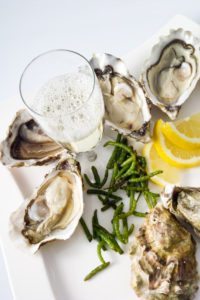Craft & Cork >> Winemaking

Add some fizz to your festivities
If you ask me what my drink of choice is during the New Year’s Eve celebrations, without hesitation, I’d say sparkling wine! If you too enjoy bubbly to ring in the New Year, then join me as we delve into the world of sparkling wines to see what makes those bubbles so special. There are age-old methods of getting the fizz that we love into the bottle, as well as some newer and speedier methods. Here we look at the most common sparkling wine methods: traditional method and carbonation. How do these sparkling winemaking methods alter the final product? Let’s find out!
Traditional Method
 The traditional method of making sparkling wine is, as the name suggests, quite old. Different countries across the world have given this method various names to help identify where the high-end sparkling wines using this method are being sourced from. The traditional method is very tedious, but results in some of the most complex sparkling wines in the world. The process is quite lengthy and labor-intensive.
The traditional method of making sparkling wine is, as the name suggests, quite old. Different countries across the world have given this method various names to help identify where the high-end sparkling wines using this method are being sourced from. The traditional method is very tedious, but results in some of the most complex sparkling wines in the world. The process is quite lengthy and labor-intensive.
The grapes used for sparkling wine are picked about 2 weeks before the regular harvest in order to preserve higher acidity in the juice as well as lower potential alcohol. A base wine is made with the juice from these early harvest grapes.
After the base wine is bottled, yeast and sugar are added to the bottles to promote a second fermentation. The bottles are sealed with crown caps, not allowing any CO₂ created during this second fermentation to escape.
The crown cap are left sealed to the bottles until after the second fermentation has finished. At this point the yeast dies and goes through autolysis. The autolysis of the yeast helps to produce the lovely, bready, creaminess in traditional method sparkling wines that we love so much. These bottles are then aged from 9 to 30 months.
 After the winemaker is satisfied with the aging time of the wine, the bottles are turned upside down to allow all of the lees to settle out on the cap. The necks of the bottles are quickly frozen. The freezing creates an easy to remove solid that is ejected from the bottle when the crown cap is removed. This solid launches out all by itself thanks to the pressure behind it from all of that trapped CO₂gas.
After the winemaker is satisfied with the aging time of the wine, the bottles are turned upside down to allow all of the lees to settle out on the cap. The necks of the bottles are quickly frozen. The freezing creates an easy to remove solid that is ejected from the bottle when the crown cap is removed. This solid launches out all by itself thanks to the pressure behind it from all of that trapped CO₂gas.
The bottles are topped up with a mixture of wine and sugar, and then it’s off to market!
Forced Carbonation
 This is the most commonly seen method of making sparkling wine with crafted wines. It is also the quickest method for making bubbly! Carbonating your wine at home can be as simple as putting the finished wine through a machine for making homemade soda. Some people are also set up with more complex keg and CO₂ tank machines. The equipment for carbonating wine with the keg set-up is however much more of an investment and requires a lot more expertise – I recommend sticking to the homemade soda machines.
This is the most commonly seen method of making sparkling wine with crafted wines. It is also the quickest method for making bubbly! Carbonating your wine at home can be as simple as putting the finished wine through a machine for making homemade soda. Some people are also set up with more complex keg and CO₂ tank machines. The equipment for carbonating wine with the keg set-up is however much more of an investment and requires a lot more expertise – I recommend sticking to the homemade soda machines.
Best of luck with your bubbles this holiday season! Cheers to a happy new year and enjoying the fruits of your labour.



Comments are closed.